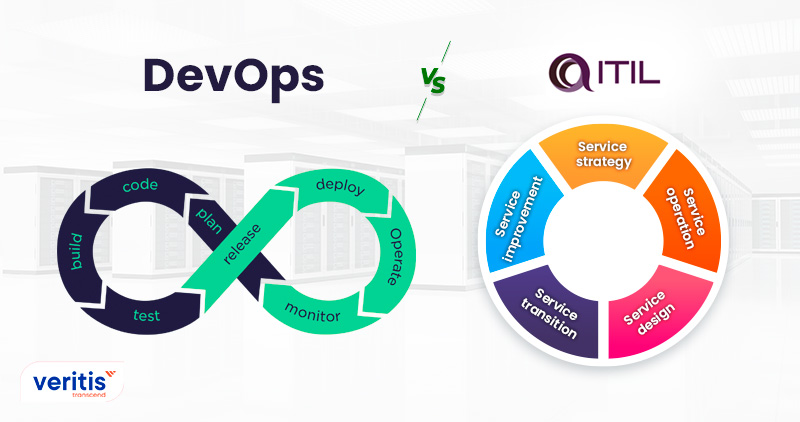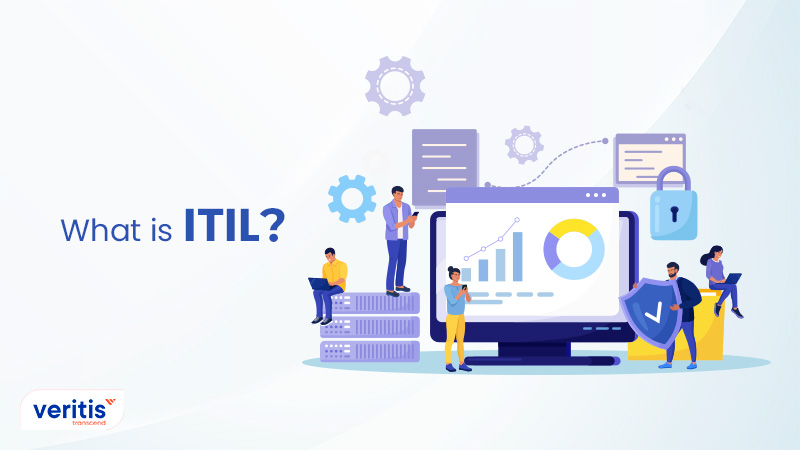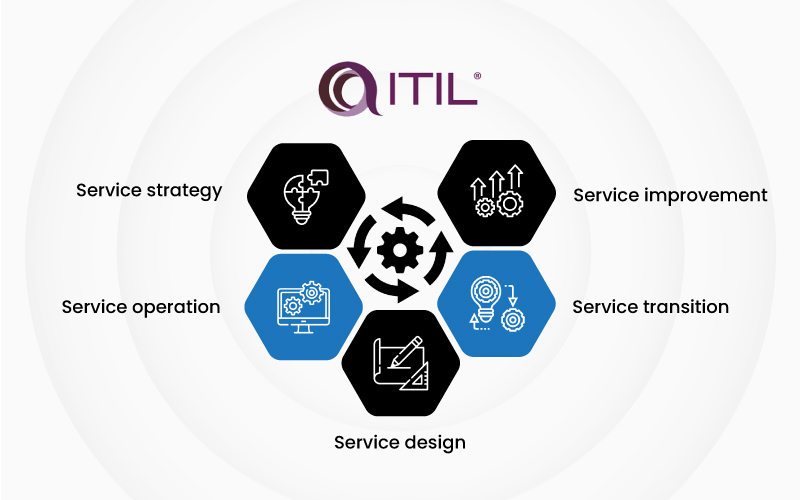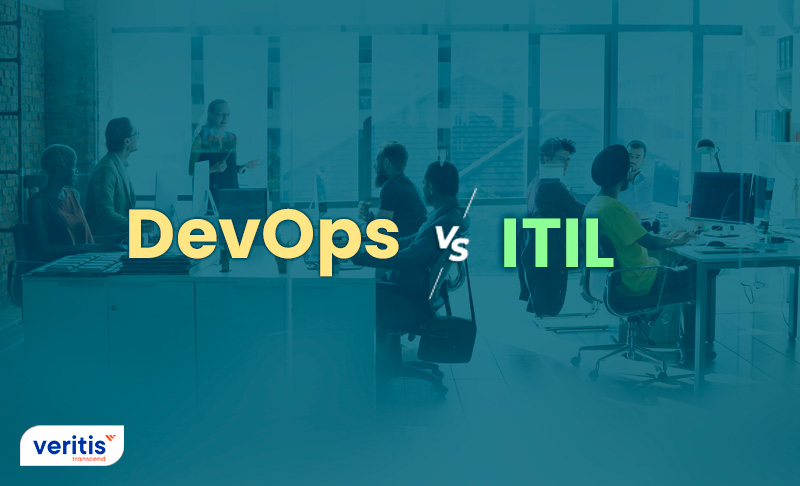
Several opinions exist about Information Technology Infrastructure Library (ITIL) and DevOps. And those opinions frequently pit the two IT approaches against each other. Organizations seem to have a difficult task when choosing between ITIL and DevOps. Both these are not incompatible. They could be complementary models, each providing its advantages to the IT field.
Technological development allows companies to streamline their operations and better serve their clients. It is easy to coordinate these technologies and provide clients with efficient services when using an ITSM or DevOps. Understanding the difference between ITIL and DevOps can offer IT teams a standardized roadmap for delivering applications as dependable services.
LeanIX IT firm revealed its ‘State of Developer Experience Survey’ report and stated a significant gap between DevOps vision and reality. More than 50% of IT pros work on a team with a low DevOps maturity level. In contrast, 70% of developers believe that this challenge impacts their work.
The concept of DevOps is leveraging better automation technology throughout the SDLC. As a result, it is possible to rework the culture and structure of all the teams combined in the development and deployment of software. While ITIL works on the process, such as aligning the IT tasks with business and service-based works for better productivity.
Echoing similar sentiments for ITIM are other surveys. A report from Enterprise Management Associates (EMA) said that 62% of users want to implement the ITIL approach in their workflow. The EMA received 400 responses from around the world.
Useful link: Why Should You Adopt DevOps and What are the Benefits it Offers?
Let’s dive into understanding the significant difference between DevOps and ITIM and their concepts without further ado.
What is DevOps?

DevOps is nothing but a combination of development and operation engineers involved together to improve work throughout the SDLC. Using DevOps tools increase a company’s ability to deliver services and applications at high speed. It delivers products faster than companies using infrastructure management processes and traditional software development. This speed allows enterprises to serve their client requirements better and compete efficiently in the current market.
DevOps is the solution to build better software in a quick time. DevOps practices permit Dev and Ops teams to accelerate delivery through fast feedback, automation, and iterative improvement. DevOps’s goal was to increase the maintainability, predictability, and efficiency of the operational processes. It was built to address the Waterfall method’s inefficiencies.
Useful link: Waterfall Vs. Agile Vs. DevOps- Which Production Method Should You Take?
Especially, they are:
- New releases have a lower failure rate
- Speed recovery if a new release gets crashed
- Less time to fix in between leads
- MNCs such as Intel, Facebook, and PayPal need to deploy deliverables frequently, and it’s a significant advantage for these companies
DevOps advantages
How can a business stay ahead in the competitive market and offer the best features to the end-users in the set time?
The following are some significant advantages a company can embrace in their productivity.
- The early detection of defections
- Enabling teams to develop and incorporate code continuously
- Make sure of faster deployment
- Improving work environments
- Improving product quality
- Allowing more room for innovation due to the automation of repetitive tasks
- Promotes agility in your business to stay ahead in the market
- Continuous software delivery
- Speed delivery of features
- Reduce complexity to manage
- Accelerate time to resolution
- Reduce the cost of production
- Delivers high productivity
Useful link: Pros and Cons of DevOps Methodology and its Principles
What is ITIL?

ITIL is a set of principles for IT service management. It is a highly structured model built to boost productivity and offer statistics for IT teams. ITIL is a subset of ITSM; it primarily focuses on procedures for delivering, managing, and improving IT services to businesses and customers. It improves predictability and IT service delivery efficiency.
It is a framework for service management and is involved in five key stages. Let’s dig in.

1) Service strategy
All managers follow instructions to develop a service strategy that ensures the company can manage all associated costs and risks. There are multiple roles involved in service strategy, and they can define as follows.
A) Business relationship manager
B) Finance manager
C) IT steering group (ISG)
D) Demand manager
E) Service Strategy manager
F) Service Portfolio manager
2) Service operation
Service operation includes technical support teams and application management that respond when an issue has an impact on the business.
3) Service design
It involves when the service’s architecture is developed, and the business needs are translated into technical requirements.
4) Service transition
In this stage, all assets are controlled to deliver a complete service for testing and integration.
5) Service improvement
It is a reflective approach that involves four stages to check the services are always in line with the demands of the business.
Useful link: Understanding the Differences Between Deep Learning and Machine Learning
ITIL advantages
Similar to ITSM, the ITIL model boosts effectiveness and efficiency. When IT teams implement this model in their workflow, it allows them to increase the potential of their IT services and fix compliance issues.
Some advantages of ITIL include:
- Enhancing learning of IT resources and costs
- The improvement of reactions to shift business needs
- Enhancing customer relationships
- Establishing a secure IT environment that promotes the development
- Boosting the efficiency of resource use
- Implementing continual procedures
- Promoting continuous growth
- Improved alignment between the IT and enterprise
- Enhanced service delivery and quality of service
- Reduced risk
ITIL tools
There are two leading ITIL tools available in the current market
1) SolarWinds Web Help Desk (WHD)
Web Help Desk is an excellent piece of software for change management, asset management and ticketing. It allows WHD to create tech tickets from service request emails to save time. It combines WHD with multiple third-party tools such as JAMF Casper Suite and Microsoft SCCM. SLA reminder alerts ensure you never again forget about the service-level agreements. You may also set up WHD to create user surveys automatically once their service request has been addressed.
2) SolarWinds Service Desk
It is full coverage of ITSM solutions. It enables ITIL services such as employee service portals, problem management, incident management, and asset management. SolarWinds Service Desk streamlines the ticketing process by permitting seamless employee communication.
Each company uniquely runs ITIL-aligned solutions. It allows you to determine your employees’ requirements and fulfill those needs by visualizing the entire issue lifecycle.
Useful link: What’s SaaS, and What are the SaaS Tools You Should Use?
DevOps and ITIL use cases
DevOps and ITIL have numerous applications. Although there are countless use cases for DevOps and ITIL, here are a few problems they may address.
DevOps can expedite new release cycles
DevOps’ agile model includes risk management and speed. Small and regular releases move through development more quickly and are easy to rectify in the event of an incident.
ITSM can reduce IT service desk calls
Knowledge management is an ITSM best practice that requires the IT team to create documentation as they work to resolve issues. Allowing internal and external customers to self-serve can significantly reduce the service desk workload.
Improve your processes with DevOps and ITIL
The IT process has been around for a while and has evolved to fit the sector’s ever-shifting requirements. When creating your own processes, there’s no need to create new processes. ITIL offers a tried-and-true starting point.
Furthermore, ITIL’s processes can improve workflow, whereas DevOps can provide enhancements such as automation, a collaborative model, and blameless post-mortems.
Comparison between DevOps and ITIL

Let’s have a look at the different parameters between DevOps and ITIL
| Parameters | DevOps | ITIL |
| Role | The roles involved in DevOps are 1) Software developer 2) The release manager 3) The DevOps evangelist 4) The automation architects 5) Security professional 6) Assurance professional | There are different roles involved in ITIL, and they are 1) Financial manager 2) Business relationship manager 3) IT steering group (ISG) 4) Demand manager 5) Service strategy manager |
| Delivery | DevOps aims to provide for better coordination and quicker delivery between developers and the production team | ITIL takes a unique approach to software delivery and aims to combine the delivery process into different business processes |
| Lifecycle | DevOps lifecycle involves 1) Development 2) Testing 3) Integration 4) Deployment, and 5) Monitoring | ITIL service lifecycle involves 1) Service strategy 2) Service Design 3) Service Transition 4) Service Operation and 5) Continual Service Improvement |
| Change Management | In DevOps, all changes are anticipated at the starting stage of the development life cycle. | ITIL provides a set of ITSM best practices, including change management in order to identify service management challenges |
| Goal | DevOps’s goal is to improve coordination and collaboration by developing a better working relationship between the Dev team and Ops Team | ITIL’s goal is to standardize a company’s ITSM structure for the quick and successful delivery of IT services |
| Approach | It uses a methodical approach to reduce conflict between two teams | ITIL uses a systematic model to manage the IT services Capping it off |
| Services | CI/CD are hard enough to increase | ITIL services are created, tested, and implemented |
DevOps and ITIL can involve in the work when a company encourages a cultural change where every professional is open, collaborative, and work towards the same goal. ITIL uses to develop standardizations both inside and outside the company. Whereas DevOps leverages human resources and promotes creativity.
It guides in pushing the quick release of new updates to the customer. It is better to implement both methodologies that offer something unique and provide you with a beginning point to improve work and operations faster and better.
Adopting DevOps and ITIL methodologies is not a big deal, but making it successful matters. This is where the Stevie Award Winner Veritis comes in place. Veritis, a leading DevOps solution provider, has enough expertise to embrace your productivity and offer the best services for your company with a cost-effective solution.
